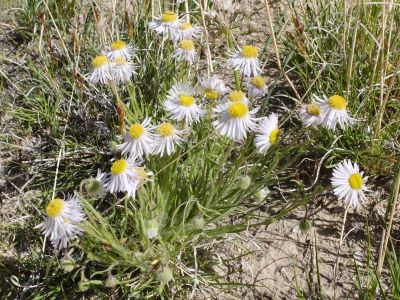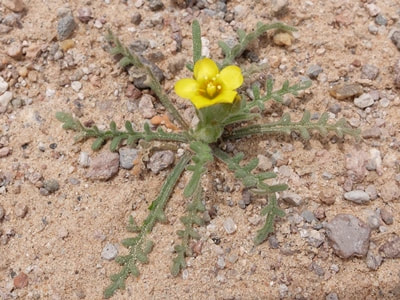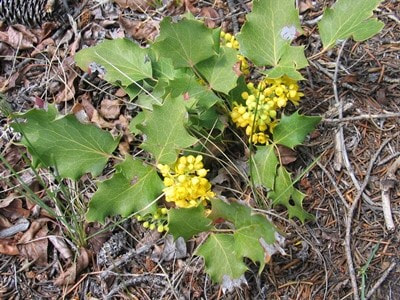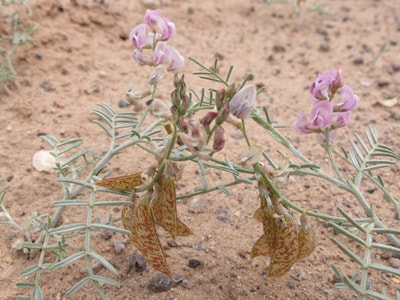Navajo Fleabane, Hairy Daisy, Shaggy Fleabane Erigeron concinnus Sunflower Family (Asteraceae)5/27/2025 The Bloom Blog Blooming this week in the environs of Abiquiú By Wildflowers of the Southern Rocky Mountains Found in dry, sandy, gravelly areas
Seen blooming in May in Plaza Blanca One of the many daisies blooming in our area at the moment, the Navajo Fleabane grows to 10 inches high; this was about 6 inches. It is covered in fine hairs that give the plant a fuzzy appearance. Leaves are narrow. Flower buds are nodding but become erect at flowering. Flowers are white to pale lavender. An infusion of the plant was used by the Navajo for general body pain, headaches, gonorrhea, difficult labor and ‘antelope infection’. Source. If you are trying to identify a different flower then you can check what other flowers bloom this month. If you cannot identify a flower from the website, send a photo and where you took it to [email protected]. Read online for tips.
0 Comments
The Bloom Blog Blooming this week in the environs of Abiquiú By Wildflowers of the Southern Rocky Mountains Whitestem Blazingstar, Rama Pegajosa, Small-flowered Blazingstar
Mentzelia albicaulis Stickleaf Family (Loasaceae) Found in dry, sandy areas Seen blooming in May by CR 142, Abiquiu The Stickleaf family is so named because their leaves have barbed hairs that stick to clothing and fur like Velcro. The Whitestem Blazingstar starts blooming as soon as it is just out of the ground, as shown in the photo, until it reaches its maximum height of six to twelve inches. The stem is pale in color, maturing to white, growing from a distinctive basal rosette of rough, deeply lobed leaves. The overall plant is more dainty, less bushy and less commonly seen than other members of the family. Flowers have five yellow petals which are orange at the center and are barely ½ inch across. The flower heads are often nodding. Several Native American tribes used the seeds for food, grinding them into a flour or butter. The Hopi smoked the plant as a substitute for tobacco and used it for a toothache remedy. The Navajo made a compound of the leaves for snakebites. Source. If you trying to identify a different flower then you can check what other flowers bloom this month. If you cannot identify a flower from the website, send a photo and where you took it to [email protected]. Read online for tips. The Bloom Blog Blooming this week in the environs of Abiquiú By Wildflowers of the Southern Rocky Mountains Found on rocky slopes, in woodlands
Seen blooming in May on the north rim of Canon de Cobre Oregon Grape is a shrub growing low to the ground with holly-like leaves which turn red in the fall. Clusters of small yellow flowers are followed by blue-black grape-like fruit which is edible. They are used for making jams, jellies, etc. They can also be made into a refreshing lemonade-like beverage. When sugar is added, the fruit juice is similar to grape juice. Oregon grape has a variety of medicinal uses, primarily stemming from the berberine compound found in its roots and bark. It was used by Native Americans to treat loss of appetite and to prevent bloody dysentery. Its current herbal use is mainly in the treatment of gastritis and general digestive weakness, to stimulate the kidney and gallbladder function and to reduce catarrhal problems. It is taken internally in the treatment of psoriasis, syphilis, hemorrhages and impure blood conditions. Externally, it has been used as a gargle for sore throats and as a wash for blurry or bloodshot eyes. The fruit is an excellent gentle and safe laxative. A bright yellow dye is obtained from the inner bark of the stem and roots, violet and dark blue-purple dyes are obtained from the fruit. Source. If you trying to identify a different flower then you can check what other flowers bloom this month. If you cannot identify a flower from the website, send a photo and where you took it to [email protected]. Read online for tips. The Bloom Blog Blooming this week in the environs of Abiquiú By Wildflowers of the Southern Rocky Mountains Found in dry, sandy areas
Seen blooming in May on CR 142 Painted Milkvetch is another of the many Astragalus species that grow in our area, identified by their seed pod rather than their flower or leaves. It is easily overlooked because it is so small and grows sprawling over the ground only a few inches high with narrow, folded, hairy, gray-green leaflets. The flowers are pink to purple and about ¼ inch long. The seed pods are inflated, mottled red and an inch long. The botanist who named it thought the pattern on the pods was ceramic-like. Traditionally, the Hopi dug up the sweet roots and gave them to children as candy. Source. If you trying to identify a different flower then you can check what other flowers bloom this month. If you cannot identify a flower from the website, send a photo and where you took it to [email protected]. Read online for tips. |
AuthorI am Marilyn Phillips, a native of England, whose love of nature and the outdoors from childhood brought me by a circuitous route to Crested Butte, Colorado in 1993 and 16 years later to northern New Mexico. My exploration of the many trails in these areas, my interest in wildflowers and photography, and career in computer system design came together in this creation. If you have any corrections, comments or questions, please contact me by email. Archives
July 2025
Categoriescopyright © 2020
|






 RSS Feed
RSS Feed